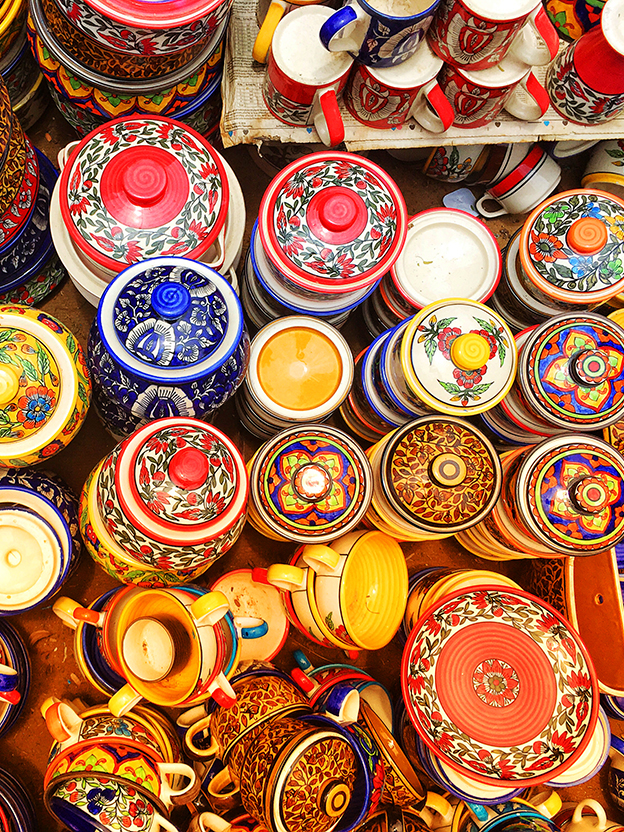THE CRAFT
Ceramic Pottery

From the state of Rajasthan
___(Kochi)_1_-_Banner.jpg)
Jaipur, Rajasthan
Jaipur’s ceramicware is among the city’s famed offerings. It's often referred to as blue pottery because of the vibrant cobalt-blue dye that dominates its colour palette. Rooted in the pottery traditions of central Asia, the craft has become integral to Jaipur’s artisanal heritage.
___(Kochi)_2.jpg)
Heritage Value
Once incorporated extensively in Mughal palaces, this unique style of pottery travelled to Jaipur through diplomatic relationships in the 16th century. According to historical records, the Mughal emperor Akbar presented a blue-and-white ceramic artefact to King Sawai Man Singh I of Rajasthan. The latter was so fascinated by this beautiful gift that he became a patron and trained artisans in the technique, transforming the city of Jaipur into an important hub.
The craft of blue pottery is a time-consuming process, made out of ceramic frit which is glazed and low-fired. It's different from traditional pottery because the artisans don't use clay. The materials used to make blue pottery include quartz stone powder, borax, gum, powdered glass, and fuller's earth. Elaborate florals, animals and birds and architectural patterns are most commonly seen in the ceramicware, which today includes a variety of serve ware and décor items.
The craft of blue pottery is a time-consuming process, made out of ceramic frit which is glazed and low-fired. It's different from traditional pottery because the artisans don't use clay. The materials used to make blue pottery include quartz stone powder, borax, gum, powdered glass, and fuller's earth. Elaborate florals, animals and birds and architectural patterns are most commonly seen in the ceramicware, which today includes a variety of serve ware and décor items.

Memory Vault
Jaipur Blue Pottery needed a revival post 1950s, as the patronage of India’s erstwhile royal families waned. The late ceramist Kripal Singh Shekhawat, a Padma Shri recipient who founded the Kripal Kumbh pottery studio in Jaipur, is credited with reviving the craft in recent decades. It was possible with the support from Maharani Gayatri Devi of Jaipur and crafts revivalists such as the late Kamaladevi Chattopadhyay.
Disclaimer:
Any information on this page is anecdotal and based on publicly
available details. If you're interested in learning more,
click here.